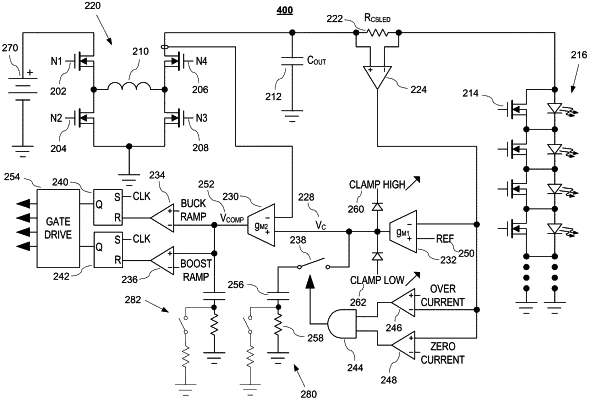| CPC H05B 45/375 (2020.01) [H02M 1/0009 (2021.05); H02M 1/0012 (2021.05); H02M 1/0058 (2021.05); H02M 1/083 (2013.01); H02M 1/32 (2013.01); H02M 3/158 (2013.01); H02M 3/1582 (2013.01); H05B 45/36 (2020.01); H05B 45/3725 (2020.01); H05B 45/38 (2020.01)] | 20 Claims |

|
1. A average current mode control circuit for driving a load with a constant current, the circuit comprising:
a sensing circuit that in response to sensing a load current generates a sensing signal;
a first error amplifier coupled receive the sensing signal and output a voltage at a voltage node that is coupled to a second error amplifier;
a compensation circuit removably coupled to the voltage node via a switch; and
a detection circuit coupled to the switch and comprising:
a zero-current detection circuit that, in response to detecting a zero current causes the switch to disconnect the compensation circuit from the voltage node to enable the first error amplifier to provide a first voltage to the second error amplifier, which increases a charging current in a capacitor to reduce a dead time in the load current; and
an overcurrent detection circuit that, in response to detecting an overcurrent causes the switch to disconnect the compensation circuit from the voltage node to enable the first error amplifier to provide to the second error amplifier a second voltage to decrease the charging current and reduce an overshoot.
|